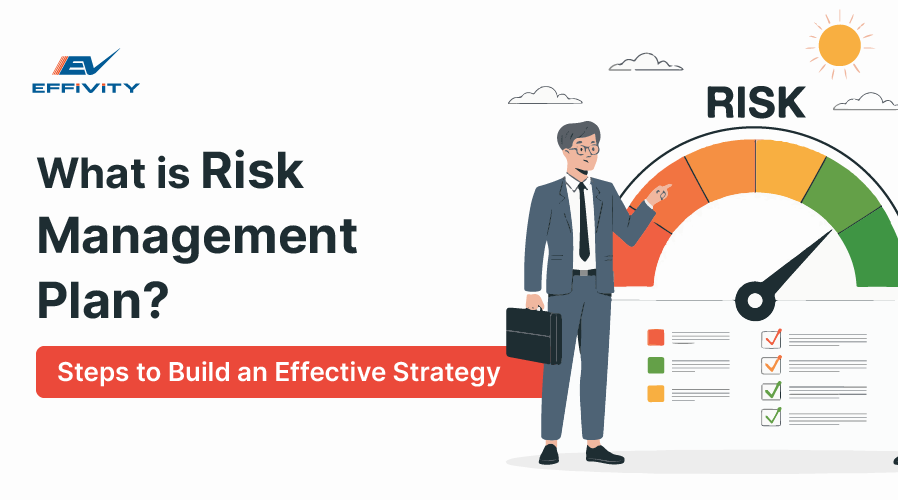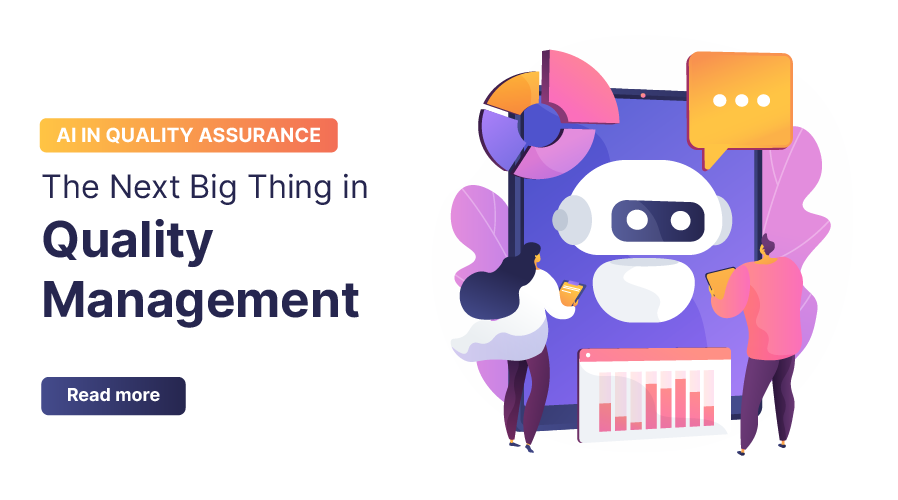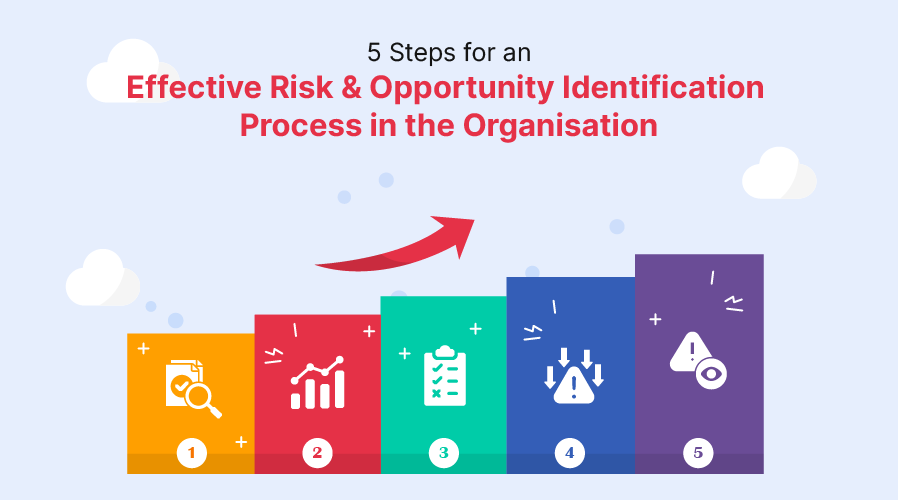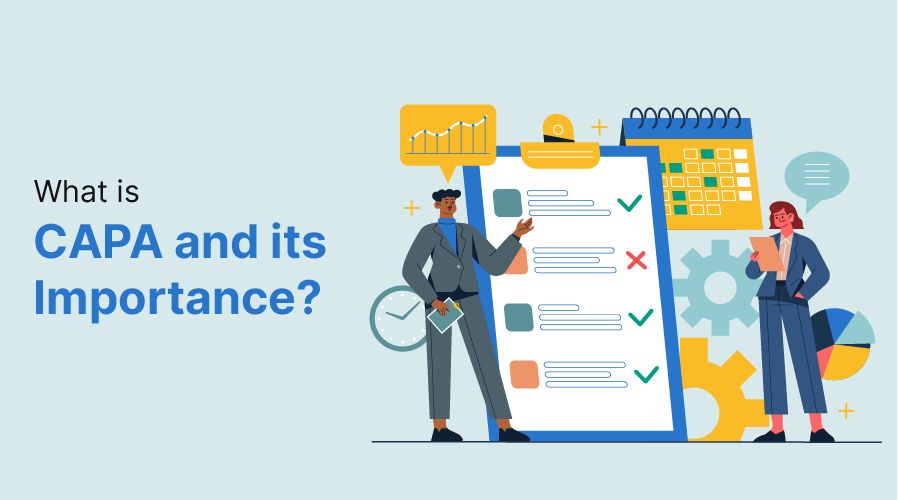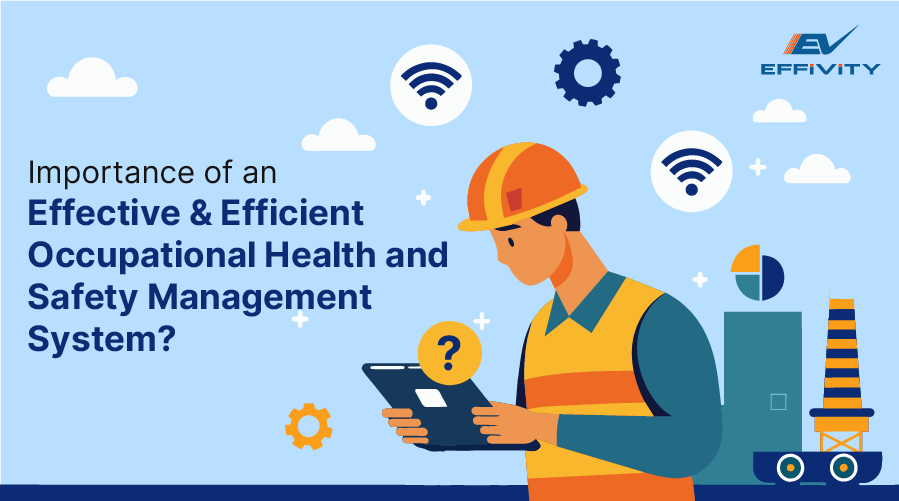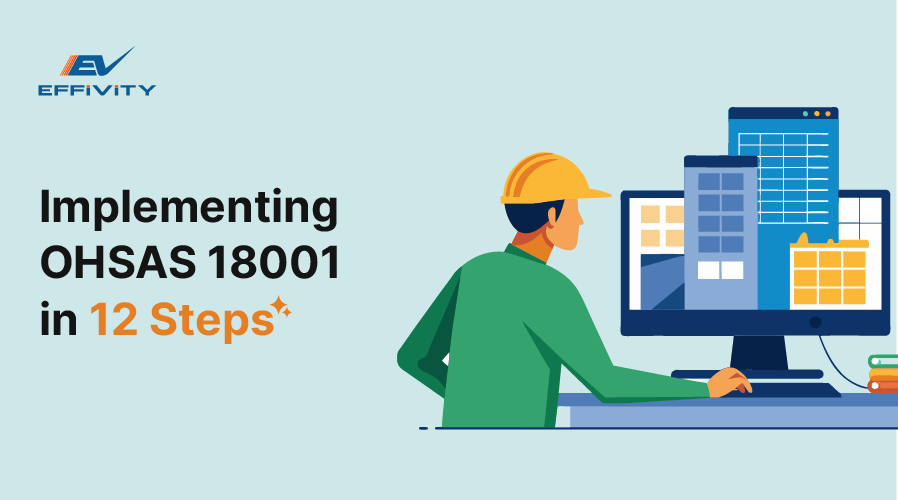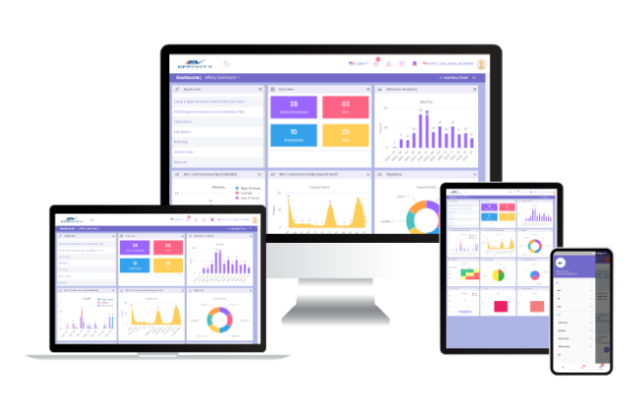In order for any business to succeed, it needs to plan, innovate, and continuously evolve to stay ahead of the curve. And effective risk management is the one place to start.
Why? Because risk is an inherent part of any business. No matter how much you try, your business cannot avoid it – from controllable risks such as operational and financial risks to political or environmental risks that are not within your control. However, as risks are multiple, so are the ways to manage and mitigate them.
A comprehensive risk management plan is all you need to identify, manage, and mitigate the various business risks before they become a huge problem. Let's dive into what is a risk management plan and how you can create effective strategies to handle risks.
What is a Risk Management Plan?
A risk management plan is a structured approach to identifying, assessing, and mitigating potential risks that could impact the success of a project, business, or organization. It provides a roadmap for anticipating uncertainties and implementing strategies to minimize their effects.
Risks can be financial, operational, strategic, or even external, such as changes in regulations or market conditions. The goal of a risk management plan is not to eliminate all risks—since that's often impossible—but to prepare for them effectively, reducing their impact and improving decision-making.
Why is a Risk Management Plan Important?
Unaddressed risks can disrupt your business operations, impacting your employees and productivity. Proactive risk identification and mitigation through a risk management plan helps you handle various challenges. It offers the following benefits-
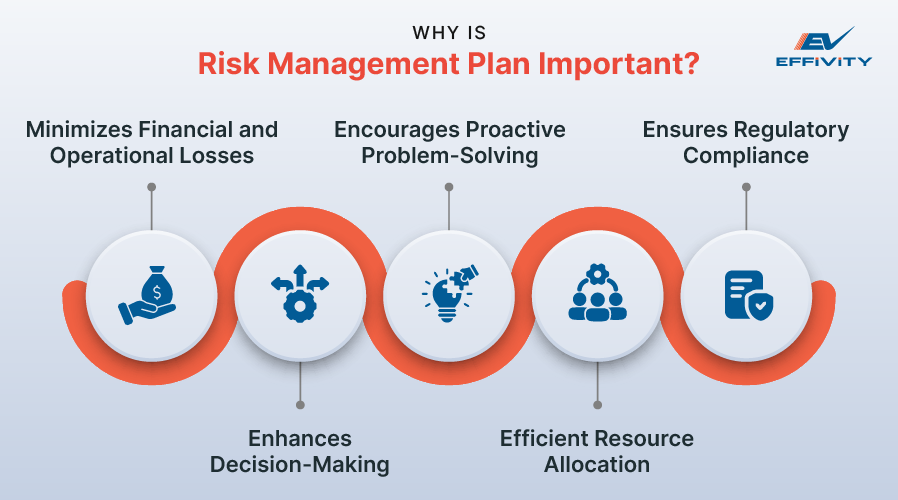
1. Minimizes Financial and Operational Losses
Risks, if unaddressed, can lead to significant financial setbacks or disrupt operations. For instance, a data breach can result in legal costs, fines, and reputational damage. A risk management plan ensures you're prepared to handle such events swiftly.
2. Enhances Decision-Making
With a clear understanding of potential risks, decision-makers can weigh their options more effectively. This not only reduces uncertainty but also fosters confidence in strategic planning.
3. Encourages Proactive Problem-Solving
Instead of reacting to crises as they occur, a risk management plan helps organizations anticipate challenges and address them before they escalate. Such a proactive approach always proves valuable for a business in ensuring continuous growth.
4. Efficient Resource Allocation
Resource planning becomes easy with a clear and structured risk management plan. Once you've identified risks, you can assign the right people and allocate accurate resources to assessing, managing, and controlling the different risks.
As a result, it will reduce duplication of efforts in your organization and make risk management more organized.
5. Ensures Regulatory Compliance
Many industries require businesses to adhere to strict risk management protocols and processes – such as those related to the quality of products or services, environmental impact of the business, or health and safety of the employees – to ensure competitiveness.
A comprehensive risk management process allows you to consider such requirements, integrate them into your business processes, and avoid potential legal issues.
Steps to Create an Effective Risk Management Plan
A solid risk management plan will make or break how your business operates and reacts to challenges. Here's how you can build one to address risks and avoid unwelcome surprises.
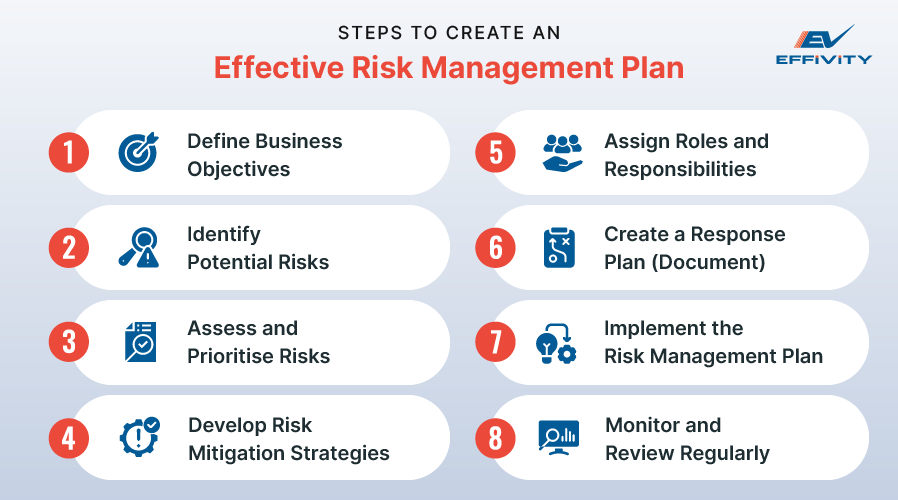
1. Define Business Objectives
A risk management plan should align with your organization's goals. Defining business objectives provides a clear foundation for identifying risks that might hinder your success.
Start by outlining your key objectives, whether they relate to project timelines, financial targets, customer satisfaction, or compliance. This way, you can prioritize these objectives to focus on risks with the greatest potential to disrupt your goals.
2. Identify Potential Risks
The next step is to identify risks that could potentially disrupt your operations or projects. This process requires collaboration across departments and input from stakeholders to ensure no critical risks are overlooked.
Brainstorm with your team and encourage them to share their concerns and insights. It will also help to review previous projects or operations to identify recurring risks and develop risk management strategies to mitigate them effectively.
3. Assess and Prioritise Risks
Not all risks demand the same level of attention. Once risks are identified, evaluate their potential impact and likelihood. This step helps you allocate resources more effectively. Depending on the risks identified, you can analyze them on the following basis-
- Rate likelihood: Determine how probable it is for a risk to occur using a scale (e.g., low, medium, high).
- Rate impact: Assess the potential damage the risk could cause, from minor inconveniences to major disruptions.
- Plot on a risk matrix: A risk matrix visually maps risks based on their likelihood and impact, categorizing them as low, moderate, or high priority.
4. Develop Risk Mitigation Strategies
Once you've prioritized risks, it is time to create strategies to reduce their impact or likelihood. Mitigation strategies can vary depending on the nature of the risk. These include-
- Avoidance: This involves avoiding the activity or situation that causes the risk. The risk management strategy is useful for high-impact risks, if the costs of mitigation exceed the benefits of eliminating the risk.
- Reduction: With this strategy, you can choose to implement measures to decrease the risk's impact or likelihood through various procedures and controls.
- Transfer: Another example of a risk management strategy is sharing the risk with a third party (e.g., through insurance or outsourcing).
- Acceptance: Sometimes, it is best to acknowledge the risk and prepare to address it if it occurs.
5. Assign Roles and Responsibilities
To address each risk proactively, you must assign responsibilities to specific team members. Define who will oversee risk assessment, who will document the risk analysis, or who will be responsible for mitigating and monitoring which risk.
Clear ownership of each risk ensures accountability. Without an assigned individual or team, critical risks may be ignored, especially during busy periods. Start by assigning risks based on employees' expertise and authority, and don't forget to document responsibilities to avoid confusion.
At the same time, it is important to ensure that risk owners are equipped with the knowledge and tools they need to fulfill their roles.
6. Create a Response Plan
A response plan provides a clear roadmap for addressing risks if they materialize. The faster your organization can react, the less damage the risk will cause. This can include defining the trigger points – what constitutes a risk event and when the response plan should be activated.
Next, you must list step-by-step actions to manage the risk and identify the tools, personnel, or finances needed to implement the plan. Lastly, it is necessary to document your risk management plan clearly to ensure you stay on top of every step and successfully manage the risk before it impacts the business.
7. Implement the Risk Management Plan
Once the plan is created, it's time to put it into action. Implementation involves ensuring that all strategies, processes, and tools are operational and that teams understand their roles.
For this, distribute the plan to relevant stakeholders and schedule regular check-ins to ensure everyone follows the established protocols. Further, risk management processes should be integrated into daily operations using compliance management platforms like Effivity to monitor and assess risks actively.
8. Monitor and Review Regularly
Risks evolve, and so should your risk management plan. Regular reviews help keep the plan relevant and effective, ensuring your organization stays prepared for new challenges.
So, conduct quarterly or semi-annual assessments or choose a tailored timeline based on your business. In addition, monitor internal and external changes, such as new regulations or market trends, that might introduce new risks.
In the End
A robust risk management plan is an investment in your organization's stability and success. It equips you to systematically identify, assess, and address risks so that you can minimize disruptions, make informed decisions, and enhance stakeholder confidence.
The process is not one-size-fits-all—your plan should reflect your organization's unique goals and challenges. With regular reviews and clear communication, you can ensure that your risk management strategy remains effective and relevant in an ever-changing environment.







